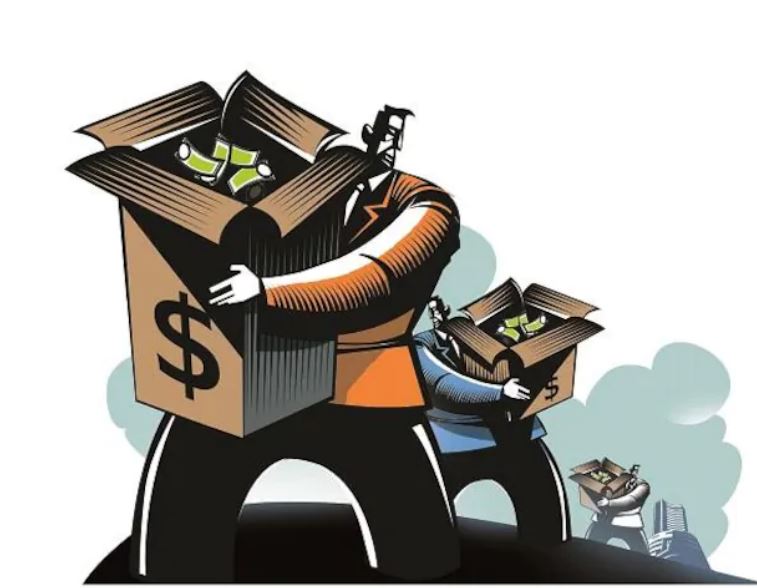News Highlights
Foreign Portfolio Investors (FPIs) are involved in selling in India.
FPIs sold assets worth about ₹50,000 crore in June 2022.
This is the second highest sell-off in a month since 1993, after March 2020.
What are Foreign Portfolio Investors?
- Foreign portfolio investors are those that invest funds in foreign financial assets.
- Their investments typically include equities, bonds and mutual funds.
- They are generally not active shareholders and do not exert any control over the companies whose shares they hold.
- The passive nature of their investment also allows them to enter or exit a stock at will and with ease.
What moves Foreign Portfolio Investment?
- Growth Prospects
- If an economy is robust and growing, investors are more inclined to invest in the financial assets of that country.
- On the other hand, if the country goes through a financial turmoil or a recession, investors tend to withdraw their investments.
- Interest Rates
- Investors earn a high return on investment. Hence, investors prefer to invest in countries with high interest rates.
- Tax Rates
- The tax is levied on capital gains.
- Higher tax rates reduce the return on investments. Hence, investors prefer to invest in countries which have lower tax rates.
Foreign Portfolio Investment in India
- Securities and Exchange Board of India (SEBI) operates the FPIs.
- Recently, SEBI has introduced the Foreign Portfolio Investors Regulations, 2019.
- FPIs also need to follow the Income-tax Act, 1961 and Foreign Exchange Management Act, 1999.
Status of FPI in India
- As per data from the National Securities Depositories Ltd. (NDSL), FPIs brought in about ₹3,682 crore in 2002.
- This grew to ₹1.79 lakh crore in 2010.
- 2008: Global financial crisis which saw FPI sell-offs in that time-frame in the country.
- The year 2017 saw FPI inflows exceed ₹2 lakh crore.
- 2020: FPIs withdrew ₹1.18 lakh crore in March 2020, the month when India announced a nationwide lockdown, triggering concerns around economic growth
Reason for Selling FPI
- Uneven Post-pandemic, recovery
- Second wave of the Covid 19 pandemic in 2021 destroyed lives and livelihoods
- Earlier this year, the economy was hit again by a third wave though it was less severe.
- Add to this the return of pent-up demand in economies worldwide as the pandemic subsided.
- The rapid pace of recovery surprised suppliers, contributing to supply-side shortages.
- Russia’s invasion of Ukraine
- Sunflower and wheat supplies from these two countries were impacted, causing global prices for these crops to rise.
- As supplies in general tightened across the globe, commodity prices too rose and overall inflation accelerated.
- India experienced rapid price increases that stayed above the Reserve Bank’s upper comfort level of 6% for five months in a row, peaking at 7.8 percent in April
- Slower Industrial production
- Industries moved at a relatively slow rate, with no sign of a complete and final recovery from the pandemic.
- For example, the S&P Global India Manufacturing Purchasing Managers’ Index (PMI) slid to 53.9 in June, the lowest level in nine months — from 54.6 in the previous month.
- This is due to inflationary pressures, which pushed business confidence to a 27-month low in June, survey-based findings show.
- Consumer spending in the subcontinent also remains weak.
- US Fed’s biggest rate hike
- The US Federal Reserve has raised its key interest rate by 75 basis points, the biggest increase since 1994, in an attempt to rein inflation.
- Indian markets are becoming less attractive to foreign investors.
- The rate hike improves yields on US treasuries and reinforces the dollar’s strength against the rupee.
- That will make the Indian financial market less attractive to foreign investors and accelerate outflows from the Indian bond and equity market
Impact of Selling FPI in India
- When FPIs sell their holdings and repatriate funds back to their home markets, the local currency suffers a setback.
- After all, they sell rupees in exchange for their home market currency.
- As supply of the rupee in the market rises, its value declines.
- In this instance, the rupee has been seeing all-time lows recently.
- About a year ago, it was trading in the region of 73 to a U.S. dollar; it is now flirting with the 78 level.
- With a weaker rupee, we have to shell out more funds to import the same unit of goods.
- The most telling impact is on the cost of our crude oil imports that contribute to 85% of our oil needs.
Pic Courtesy: Business Standard
Content Source: The Hindu



